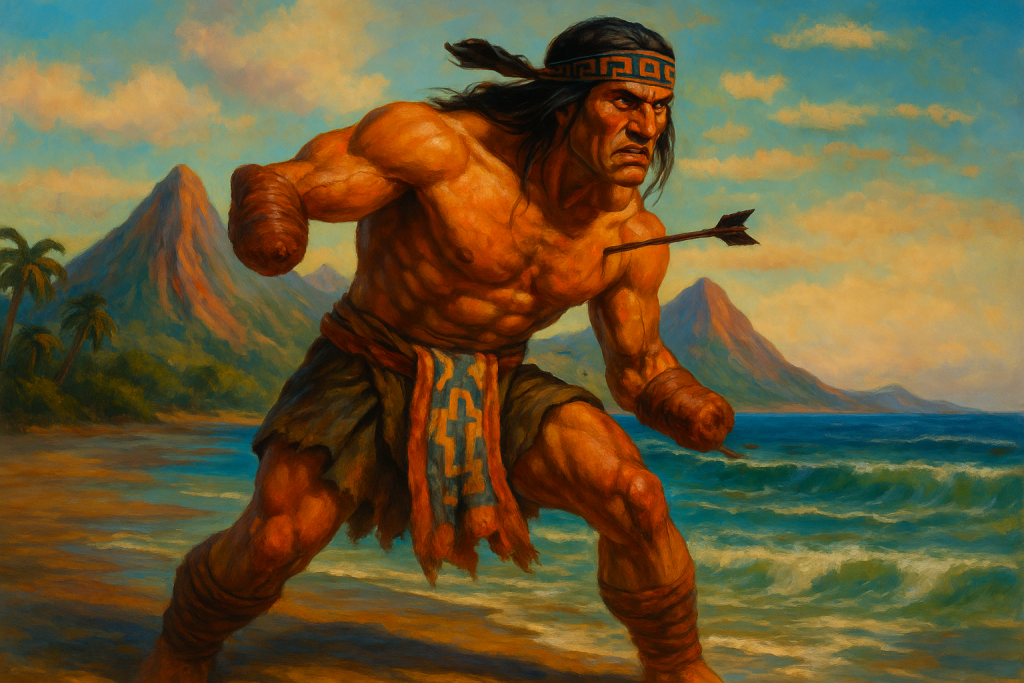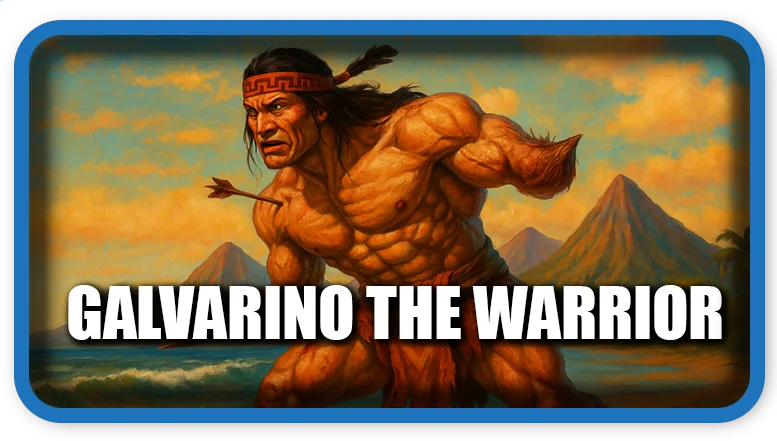⏲️ Estimated reading time: 5 min
Galvarino the Warrior with No Hands – The Untold Story of Chile’s Fiercest Hero
Galvarino, a fearless Mapuche warrior, defied Spanish colonizers even after both his hands were severed. His story is one of unimaginable resilience, making him a symbol of indigenous resistance and unbreakable spirit in Chilean history.
The Rise of a Legend
In the mid-16th century, the Mapuche people of southern Chile faced one of the most brutal campaigns of conquest carried out by the Spanish Empire. Unlike other regions, where colonial control was quickly imposed, the Mapuche fiercely resisted foreign domination for centuries. Among their warriors, Galvarino emerged as a unique and unforgettable figure a man who went to battle with no hands.
Galvarino was not just another soldier in the Mapuche resistance. He was a leader, a motivator, and, after suffering a gruesome mutilation, a living testament to defiance.

Mutilation as a Message
The defining moment in Galvarino’s life came during the Battle of Lagunillas in 1557. Captured by Spanish forces under Governor García Hurtado de Mendoza, Galvarino along with several other prisoners was subjected to brutal punishment. As a deterrent to further resistance, Mendoza ordered both of Galvarino’s hands to be chopped off.
The idea was to create a psychological blow to the Mapuche forces show them what awaited those who dared challenge Spanish authority. But the message backfired spectacularly.
Return to the Battlefield
Galvarino did not wallow in defeat. Instead, he returned to his people and demanded to rejoin the war effort. According to oral histories, Galvarino said:
“I will continue to fight, even if I must carry weapons tied to my arms.”
This was not a hollow promise. Accounts state that Galvarino had knives or blades fastened to his wrist stumps, allowing him to fight in close combat. Though his physical capability was obviously compromised, his presence on the battlefield served as a powerful symbol of resistance.
He fought in several key battles, notably the Battle of Millarapue, where the Mapuche once again clashed with Spanish forces. Despite being outmatched in weaponry and numbers, Galvarino’s involvement inspired many Mapuche to resist rather than surrender.
Execution and Immortality
At Millarapue, Galvarino was again captured. This time, the Spanish decided not to let him escape with his life. He was executed, reportedly by hanging, though details vary.
But even in death, Galvarino achieved what few warriors do immortality through memory. His story spread throughout Mapuche communities and beyond. In a culture steeped in oral tradition, the tale of the handless warrior who would not yield became legendary.

Historical Context: The Arauco War
Galvarino’s life unfolded during the Arauco War, a long and bitter conflict between Spanish colonists and the Mapuche people. This war spanned over 300 years, with varying intensities, from the mid-1500s well into the 1800s.
The Mapuche proved to be one of the few indigenous groups in the Americas to successfully resist conquest for generations. They developed military tactics, fortified towns, and strategic alliances to delay Spanish control.
Galvarino’s contribution to this resistance wasn’t just in battle. His symbolic role galvanized fighters and helped shape a national memory of defiance.
Galvarino’s Enduring Legacy
Today, Galvarino is remembered as a national and indigenous hero in Chile. His name appears in:
- Statues and monuments, particularly in Mapuche regions
- School history books, where his story is taught to children
- Street and town names, such as the town of Galvarino in the Araucanía region
- Popular culture, including films, comics, and murals
He is a cultural icon not just for indigenous rights, but for anyone who values courage in the face of overwhelming odds.
A Symbol of Indigenous Pride
Galvarino’s legacy resonates especially with modern indigenous movements in Latin America. As the Mapuche continue to fight for land rights, autonomy, and recognition, Galvarino serves as a powerful ancestral figure. His story connects past struggles with present demands.
In many ways, Galvarino stands as a reminder that colonization didn’t erase indigenous identities. Instead, it forged heroes who would inspire future generations to hold onto their language, traditions, and sense of justice.
The Power of Myth and Reality
Historians debate the finer details of Galvarino’s life. Was every aspect of his story accurate? Did he truly fight with knives tied to his wrists? Was he the sole figure who rallied troops with such fervor?
Whether or not the historical record is 100% precise, the emotional and cultural truth of Galvarino’s story is undeniable. Like other legendary figures, his role transcends fact it teaches, inspires, and defines the identity of a people.
Lessons from Galvarino
Galvarino’s story is more than historical curiosity it holds timeless lessons:
- Resilience in the face of unimaginable loss
- Courage when surrender would be easier
- Leadership by example, even when wounded
- Symbolic power that can unite a people
In today’s world, his story encourages us to fight for our rights, no matter the obstacles. It teaches that even when you’re broken, you’re not defeated a message that continues to resonate across cultures and generations.
📩 Do you have questions or suggestions? Leave a comment or contact us!
🏷️ Tags: Galvarino, Mapuche warrior, Chilean history, indigenous resistance, Arauco War, Spanish conquest, Latin America heroes, amputee hero, colonial history, indigenous pride
Only logged-in users can submit reports.
Discover more from HelpZone
Subscribe to get the latest posts sent to your email.

